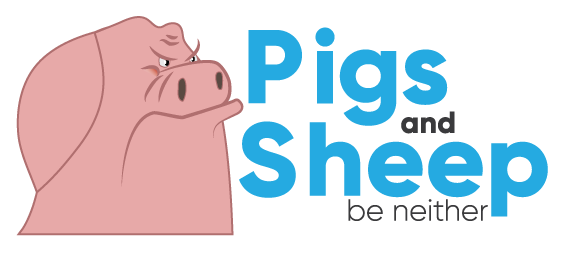Almost every day, I read a story of another restaurant forced to close its doors due to a minimum wage increase. None of these stories, however, seem to penetrate the progressive zeitgeist, as evinced by the near-universal support for a national $15 minimum wage (or even higher) among the Democratic Presidential hopefuls, and the treatment of the idea as an unchallengeable no-brainer by most of the press.
That most economists oppose raising the minimum wage, and that the arguments against a higher minimum wage are legion, matters not at all. The press to increase it is treated as a matter of “fairness,” and as a “correction” of imbalances that line the pockets of restaurant owners at the expense of their employees. Indeed, advocates will often tell us that small business owners have massive profits and piles of cash that they hoard by underpaying their workers, and that the minimum wage increase is just a pittance to them that they won’t even feel.
Yes, it is true that a successful restaurant can make a lot of money. The reason for that can be understood by anyone with middle-school math skills, and it also explains why government can’t simply tinker with things to the benefit of employees.
Expressed simply, the costs of running a restaurant boil down to A+BX. A is the sum of fixed costs, that don’t vary with volume. B is the sum of costs that vary with volume. X is total revenue. There isn’t pure linearity here (for example, you might be able to handle a 5% bump in volume without adding a cook or a waiter, but at +10% you’d need more staff), but it’s close enough for illustration.
The key here is A – the fixed costs. In a restaurant, they are substantial. Rent and property taxes, utilities, insurances, licenses and regulatory fees, mandated services, baseline payroll (even at zero sales, you need a minimum staff), et al. Add to that the startup costs – the equipment, furnishings, and build-out that will have to be amortized over a number of years. These set a substantial break-even point that can be tens of thousands of dollars per week, even before the first customer comes in the door.
B – the costs that vary with volume, are also substantial. Food cost will typically run to a third of sales, and payroll will bring that burden to over 50%, and oftentimes to 75%.
In business terms, a restaurant can offer a marginal rate of return (MRR) of 25%-50%. This sounds nice, but don’t forget A – the fixed costs, which as I noted, are fundamental to understanding this all.
For illustrative purposes, lets consider a restaurant that does a million in sales a year (that’s on the small side). That’s $20K per week, roughly speaking. If the restaurant’s fixed costs are $10K per week, and it’s running at 50% MRR, it’s breaking even – the owner doesn’t make a penny. If sales bump up by 10% to $1.1M, the owner will make $1000 per week. If sales bump up by 25%, to $1.25M, the owner’s profit pops to $2500 a week. at $1.5M, he’s making $5000 per week. Sounds nice, doesn’t it? But, the linearity works both ways. If his sales drop by 10%, he’s now got to put $1000 per week in just to keep the doors open – and that’s if he works for free.
In short, the restaurant formula is one that can take an owner off a cliff in a hurry.
Now, double payroll costs. In our simple model, this takes B to 67% (a further simpification, but accurate enough). Now, the restaurant’s break even revenue increases from $1M to $1.5M. Again – this is a small operation – think fewer than 10 employees.
Where does that money come from?
Increase prices by 50%? Will customers go along, or will they curtail their dining habits? We all know the answer.
Cut other costs? Where? The fierceness of competition will have already ensured that a place that’s not running efficiently will go away quickly. What cost savings were available were already taken.
Break-even means the owner’s already working for free, in addition to carrying all the risk. Remember all those startup costs? Even for a small operation, they’ll run well into six figures. Even if the lease can be walked away from, the owner will suffer major loss should his business go under.
That is the great ignored tragedy of restaurants being forced out of existence. Employees can look for other jobs, and suffer only the lost wages between one gig and the other, discounting that the increased difficulty of finding jobs when everyone’s closing down. The business owner who was forced to shut down by misguided and wrong-headed do-gooders has lost years, or perhaps decades, of hard-won savings, or is saddled with a debt that he has to pay but has no means of paying.
I’ve covered the minimum wage at depth in this blog, including a deconstruction of one advocate’s arguments, the falseness that business owners have ample reserves to cover the increased cost, and that high minimum wages contribute to individual economic stagnation and worse.
I don’t expect that many who support higher minimum wages will be swayed by math, even math as simple as presented here. If they were so predisposed, they’d not be advocates in the first place.
But, perhaps some might realize that making a small business succeed is already a tall order, and that imposing an unnaturally high labor cost will destroy countless businesses and countless jobs. As with most matters of policy, understanding the effects and consequences is key to judging the actual merits.

Maybe the higher minimum wage advocates are all health nuts and are actually trying to make people eat at home and presumably healthier.